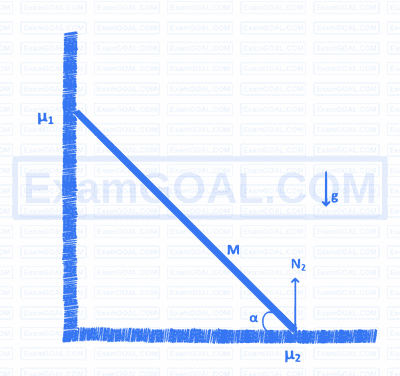Mechanics
Units & Measurement and DimensionsMotion in a Straight LineLaws of MotionCircular MotionWork, Energy and PowerRotational MotionGravitationSimple Harmonic MotionFluid MechanicsWavesHeat and ThermodynamicsOptics
Ray OpticsElectromagnetism
ElectrostaticsCurrent ElectricityCapacitorMoving Charges and MagnetismElectromagnetic InductionAlternating CurrentElectromagnetic WavesModern Physics
Atoms and NucleiDual Nature of RadiationSemiconductor Devices and Logic GatesRotational Motion
Practice QuestionsMCQ (Single Correct Answer)
1
An inextensible cord of negligible mass passes over the rim of a solid disc of mass $M$ and radius $R$. The disc is free to rotate about an axis passing through the centre perpendicular to the plane of the screen, as shown in the figure. Two blocks of masses $M$ and $\widetilde{M} / 2$ are attached to the two free ends of the cord. Assume that there is no slipping of the cord on the disc. The acceleration due to gravity is $g$. What is the value of the angular acceleration of the disc?


IAT (IISER) 2024
2
Consider a solid rod of mass $m$ and uniform density resting against a vertical wall and horizontal floor as shown in the figure. The coefficients of friction of the rod with the wall and with the floor are given to be $\mu_1$ and $\mu_2$ respectively. Gravity is acting downwards with acceleration due to gravity $g$. What should be the value of the inclination angle $\alpha$ so that the rod stays in equilibrium?


IAT (IISER) 2020